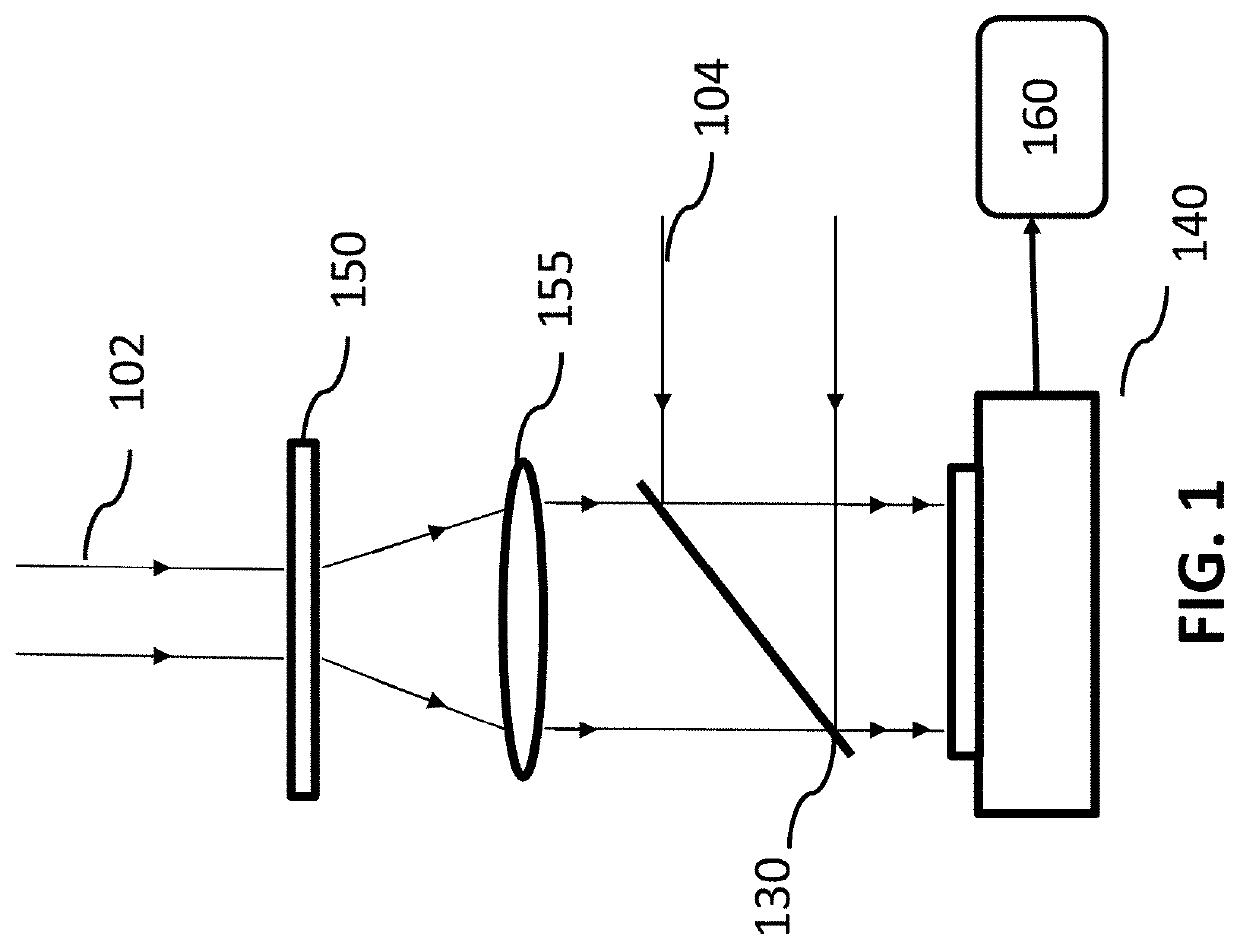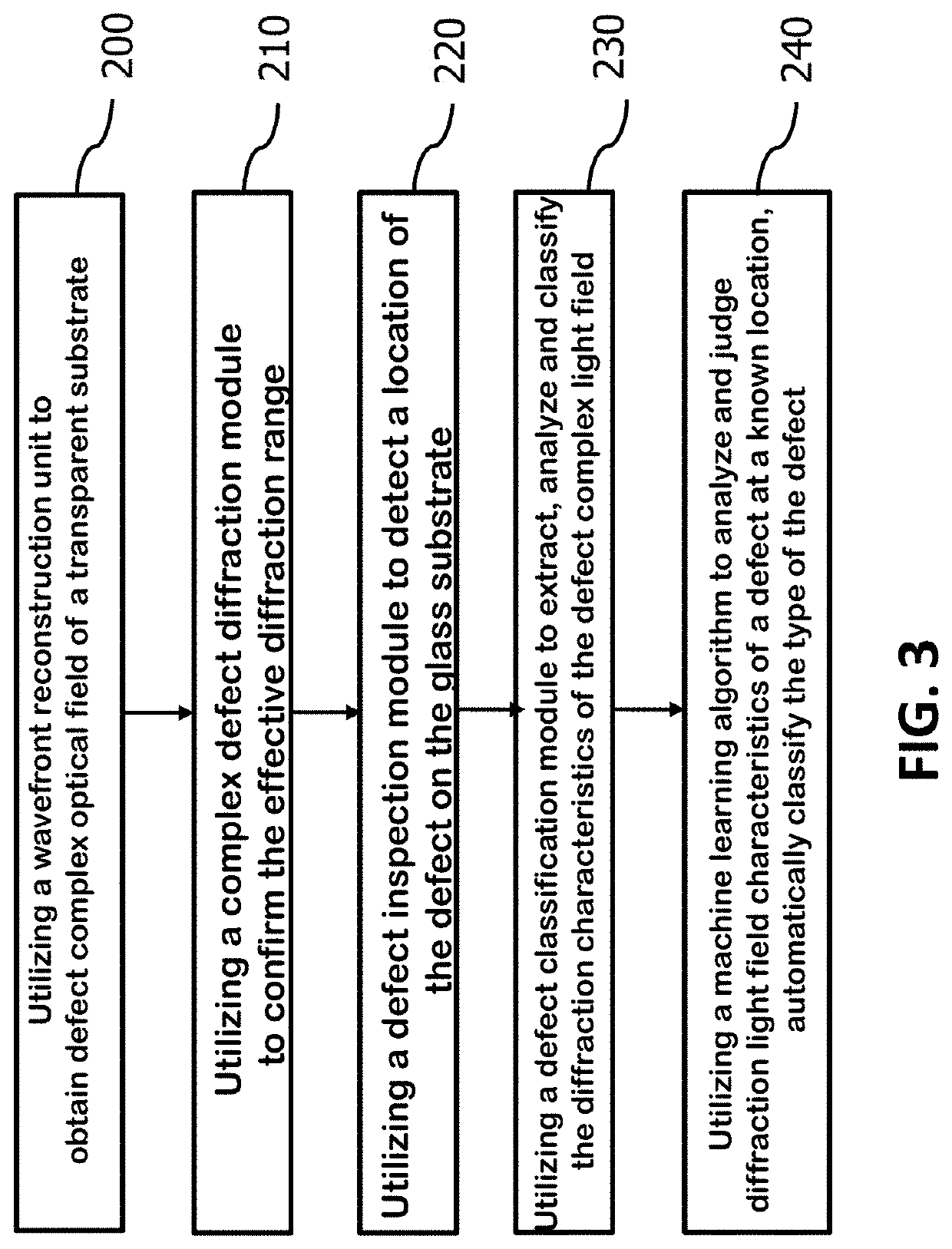Complex defect diffraction model and method for defect inspection of transparent substrate
a defect inspection and complex defect technology, applied in the field of complex defect inspection models and methods, can solve the problems of inability to detect micro-bubble defects, and inability to completely obtain complex image information of glass substrates, etc., to achieve rapid comparative analysis and high frequency information. the effect of not easy to obtain
- Summary
- Abstract
- Description
- Claims
- Application Information
AI Technical Summary
Benefits of technology
Problems solved by technology
Method used
Image
Examples
Embodiment Construction
[0046]Some preferred embodiments of the present invention will now be described in greater detail. However, it should be recognized that the preferred embodiments of the present invention are provided for illustration rather than limiting the present invention. In addition, the present invention can be practiced in a wide range of other embodiments besides those explicitly described, and the scope of the present invention is not expressly limited except as specified in the accompanying claims.
[0047]The proposed digital holography recording method is applied to obtain and record wavefront information of defects on a transparent substrate. Based on this wavefront information, the diffraction fields of defects on different planes are identified and classified through the proposed defect diffraction model. The method of identification and classification is to automatically analyze the wavefront and diffraction characteristics of the defects through computer learning, in order to achieve...
PUM
| Property | Measurement | Unit |
|---|---|---|
| focal length | aaaaa | aaaaa |
| focal length | aaaaa | aaaaa |
| diameter | aaaaa | aaaaa |
Abstract
Description
Claims
Application Information
 Login to View More
Login to View More - R&D
- Intellectual Property
- Life Sciences
- Materials
- Tech Scout
- Unparalleled Data Quality
- Higher Quality Content
- 60% Fewer Hallucinations
Browse by: Latest US Patents, China's latest patents, Technical Efficacy Thesaurus, Application Domain, Technology Topic, Popular Technical Reports.
© 2025 PatSnap. All rights reserved.Legal|Privacy policy|Modern Slavery Act Transparency Statement|Sitemap|About US| Contact US: help@patsnap.com



